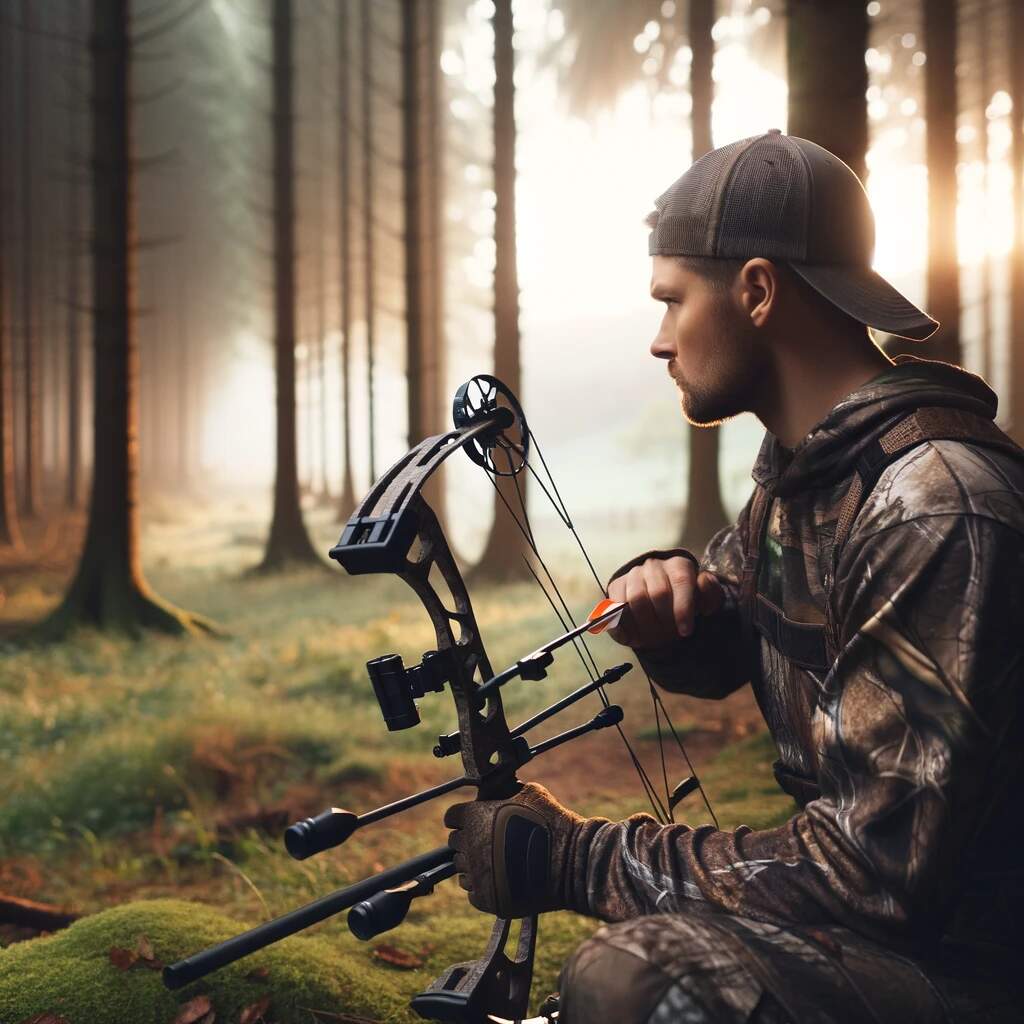Bow hunting is a timeless and exhilarating pursuit that has captivated outdoor enthusiasts for generations. The thrill of stalking game through the wilderness, the precision required to make a clean shot, and the connection to nature are just a few of the reasons why bow hunting continues to draw new participants. If you’re a beginner looking to delve into the world of bow hunting, you’re in for a rewarding and challenging journey.
In this comprehensive guide, we will explore the most effective bow-hunting techniques tailored for beginners, helping you embark on this exciting adventure with confidence.
The Basics of Bow Hunting
Before diving into specific bow hunting techniques, it’s crucial to grasp the fundamental principles that underpin this captivating activity.
1. Selecting the Right Bow
Choosing the appropriate bow is the first and most critical step in your bow-hunting journey. There are three main types of bows to consider:
- Compound Bow: Known for their accuracy, speed, and adjustability, compound bows are popular among beginners. They use a system of pulleys and cables to generate significant force, making it easier to draw and hold the bowstring.
- Recurve Bow: Recurve bows are more traditional and simpler in design. They are favored by those seeking a classic bow-hunting experience. Recurves require more strength to draw, making them a bit more challenging for beginners.
- Longbow: Longbows are the most traditional of all bows, known for their simplicity and historical significance. They require a great deal of skill and practice to master, making them less suitable for beginners.
When selecting your bow, it’s crucial to consider factors such as draw weight (the force required to pull the string), draw length (your arm’s length when fully extended), and your own physical capabilities.
2. Understanding Your Quarry
Before heading into the woods, it’s essential to learn about the specific game you plan to hunt. Each species has distinct habits, behaviors, and habitats. Knowing the animal’s feeding patterns, breeding seasons, and preferred habitats will greatly increase your chances of success.
3. Scouting
Scouting involves gathering information about the hunting area. You’ll want to locate animal trails, feeding and bedding areas, water sources, and any signs of recent activity. This information will help you plan your hunting strategy.
4. Learn the Regulations
Familiarize yourself with the hunting regulations and seasons in your area. Abiding by these rules is not only essential for ethical hunting but also for avoiding legal troubles.
5. Safety First
Safety should always be your top priority when bow hunting. Make sure you’re familiar with basic first aid, carry essential safety gear, and inform someone of your hunting plans, including your expected return time.
Now that we’ve covered the basics let’s delve into the most effective bow hunting techniques for beginners.
1. Mastering Stealth and Concealment
One of the most critical skills for bow hunting is the ability to move quietly and remain hidden. Game animals have keen senses of smell, sight, and hearing, which they use to detect potential threats. Here’s how you can improve your stealth and concealment:
- Camo Clothing: Invest in camouflage clothing that matches your hunting environment. This will help you blend into your surroundings.
- Scent Control: Animals can detect human scent from a considerable distance. Use scent-free soap, shampoo, and laundry detergent, and consider using scent-masking sprays or cover scents.
- Stay Low and Slow: Move slowly and crouch low to the ground to minimize your profile. Avoid making sudden movements and disturbing the natural environment.
- Use Natural Cover: When stalking, use trees, rocks, or bushes to break up your silhouette and provide cover.
- Wind Awareness: Pay close attention to the wind direction. Always try to position yourself downwind of the game, so your scent is carried away from them.
- Stay Quiet: Avoid stepping on dry leaves, breaking twigs, or making unnecessary noise. Wear quiet clothing and take deliberate, careful steps.
2. Effective Tree Stand Hunting
Tree stands are elevated platforms that give hunters a height advantage, allowing them to remain hidden from game while providing a clear shot. Here’s how to use tree stands effectively:
- Choose the Right Location: Set up your tree stand in an area with high game activity, such as near a well-traveled game trail or a feeding area.
- Concealment: Use natural cover to conceal your tree stand, such as branches, leaves, or camo netting. This will help you blend into the surroundings.
- Safety Harness: Always wear a safety harness when using a tree stand. Falls from tree stands can be dangerous, so take safety seriously.
- Be Patient: Tree stand hunting often requires patience. Wait quietly for the game to come within range, and avoid fidgeting or making unnecessary movements.
- Practice Shooting: Before hunting from a tree stand, practice shooting from an elevated position to get comfortable with the angle and distance.
3. Ground Blind Hunting
Ground blinds are portable, camouflaged shelters that provide concealment while hunting at ground level. They are an excellent option for beginners who may not have access to tree stands. Here’s how to make the most of ground blind hunting:
- Blend In: Choose a ground blind that matches your hunting environment, and add natural vegetation like branches and leaves for additional concealment.
- Stay Still: When inside the blind, remain as still as possible. Animals can still detect movement, even if they can’t see you.
- Scent Control: Use scent control methods in and around the ground blind to minimize human scent.
- Visibility: Ensure you have a clear line of sight and range of motion for your bow. Trim any obstructing branches or vegetation if necessary.
- Set Up Early: Place your ground blind well in advance of your hunt to allow animals to acclimate to its presence.
4. Calling and Decoying
Calling and using decoys can be effective methods for attracting game within bow range. Here are some tips for success:
- Learn Animal Sounds: Study the vocalizations of the animals you’re hunting, such as deer grunts, turkey calls, or predator calls. Practice mimicking these sounds.
- Use Realistic Decoys: Invest in high-quality, realistic decoys that mimic the appearance and behavior of the game species you’re pursuing.
- Timing Matters: Use calls and decoys at the appropriate times. For example, use mating calls during the rut (breeding season) to attract deer.
- Stay Hidden: Ensure you’re well-concealed when using calls or decoys. Animals may approach cautiously, so be patient.
- Practice Calling: Before your hunt, practice your calling techniques to sound as convincing as possible.
5. Shot Placement and Accuracy
Perhaps the most crucial aspect of bow hunting is making an ethical and humane shot. Accuracy and shot placement are paramount to ensuring a quick and clean kill. Here’s what you need to know:
- Practice Regularly: Spend ample time at the archery range practicing your shooting skills. Consistent practice improves accuracy and confidence.
- Know Your Range: Understand your effective shooting range and don’t attempt shots beyond your capabilities. For most beginners, shots within 30 yards are ideal.
- Focus on Vital Organs: Aim for vital organs like the heart and lungs. Avoid risky shots that may lead to wounding without a clean kill.
- Wait for the Right Shot: Patience is key. Wait for the animal to present a broadside or quartering-away shot for the best chance of a clean hit.
- Follow Through: After releasing the arrow, maintain your shooting form and follow through with your shot. This ensures accuracy and consistency.
6. Tracking and Recovery
Even with a well-placed shot, tracking and recovering the downed animal can be challenging. Here are some tips for tracking and recovery:
- Mark the Spot: Mark the location of your shot and the animal’s last known position. This will help you start the tracking process.
- Wait Before Tracking: Give the animal some time to expire after the shot. Rushing to track immediately may push it further away.
- Blood Trail: Look for a blood trail to follow. Bright red blood indicates a lung or heart shot, while darker blood may suggest a liver or muscle hit.
- Use Tracking Dogs: If you’re struggling to find the animal, consider using a trained tracking dog to help locate it.
- Stay Calm: Tracking can be challenging, and it’s essential to stay calm and focused. Be patient and methodical in your approach.
7. Understanding Animal Behavior
To be a successful bow hunter, it’s crucial to have a deep understanding of the animals you’re pursuing. This knowledge will help you anticipate their movements and behaviors. Here are some insights into common game species:
Whitetail Deer
- Rut Behavior: During the rut, bucks are more active and may be more easily lured with calls. They also become less cautious, which can be both an advantage and a challenge.
- Bedding and Feeding: Whitetail deer typically bed in dense cover during the day and feed in open areas during dawn and dusk.
- Wind Matters: Deer rely heavily on their sense of smell. Pay attention to wind direction to avoid being detected.
Wild Turkey
- Calls: Turkey calling is essential for luring these birds. Learn various turkey calls, including yelps, clucks, and gobbles.
- Roosting: Turkeys roost in trees at night and fly down to the ground in the morning. Set up near their roosting areas or between their roost and feeding areas.
- Camouflage: Turkeys have excellent vision. Wear full camouflage, including a face mask and gloves, to remain hidden.
Elk
- Bugling: During the rut, bull elk bugle to attract cows and challenge other bulls. Learning to mimic these calls can be highly effective.
- Habitat: Elk are often found in mountainous terrain and dense forests. They are also creatures of habit, following established migration routes.
- Use Terrain: Use natural terrain and topography to your advantage for concealment and stalking.
Small Game
- Squirrels, rabbits, and other small game require a different approach. Stillness, patience, and sharp shooting are key.
- Know Their Habits: Learn about the habits and feeding patterns of the specific small game species you’re pursuing.
8. Practice, Practice, Practice
Becoming proficient in bow hunting requires ongoing practice. Here are some additional tips to improve your skills:
- Join a Club: Consider joining an archery club or a local hunting group. You’ll gain valuable insights from experienced hunters.
- Shoot in Different Conditions: Practice in various weather conditions and lighting to become adaptable and confident.
- 3D Targets: Invest in 3D animal targets to simulate hunting scenarios and practice shot placement.
- Learn from Mistakes: Don’t be discouraged by missed shots or unsuccessful hunts. Learn from your mistakes and use them as opportunities for improvement.
9. Ethical and Responsible Hunting
Bow hunting, like all forms of hunting, comes with ethical responsibilities. It’s essential to be a responsible and ethical hunter. Here are some key principles to follow:
- Respect the Animal: Treat the animal with respect and gratitude for the sustenance it provides.
- Obey the Law: Follow all hunting laws and regulations, including bag limits and hunting seasons.
- Avoid Overhunting: Hunt sustainably and avoid overharvesting game populations.
- Hunt for the Right Reasons: Hunt for food, conservation, and a connection to nature, not for the thrill of killing.
- Practice Conservation: Support and engage in conservation efforts to protect wildlife and their habitats.
10. Continual Learning and Improvement
Bow hunting is a lifelong journey of learning and improvement. Stay open to new techniques, technologies, and strategies. Attend workshops, read books, and seek advice from experienced hunters. Your skills and understanding will evolve over time, making you a more effective and responsible bow hunter.
Conclusion
Bow hunting is a challenging and rewarding pursuit that allows you to connect with nature, test your skills, and harvest your own food. As a beginner, mastering the fundamentals is key to becoming a successful bow hunter. From selecting the right equipment to honing your skills in stealth, shot placement, and ethical hunting practices, this guide has provided you with a solid foundation to begin your bow hunting journey.
Remember that bow hunting is not just about the harvest; it’s also about the experience, the connection to the outdoors, and the responsibility of being a steward of the land and its wildlife. Embrace this journey with respect for the animals, the environment, and the rich tradition of bow hunting. With dedication, practice, and a deep appreciation for the natural world, you can become a skilled and responsible bow hunter.










